Podcast: Play in new window | Download
Subscribe: RSS
If you are a fan of spring professional football, I have some good news and some bad news for you.
The good news is that the newly created United Football League (the UFL) intends to start play on March 30, 2024.

The bad news is that the former USFL (which has been in existence for the past two years) and the third iteration of the XFL (which began play last year in 2023) were merged to create the new United Football League.
The newly formed UFL will have just eight teams once play begins this spring. The teams will be in two separate “conferences”.
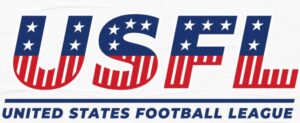
USFL Conference:
Birmingham Stallions (2-time defending champs)
Houston Roughnecks (an XFL team last season. It replaces the USFL’s Houston Gamblers)
Memphis Showboats
Michigan Panthers

XFL Conference:
Arlington (Texas) Renegades (defending champs)
D.C. Defenders
San Antonio Brahmas
St. Louis Battlehawks
Unfortunately, five of the eight USFL teams have now gone to the spring professional football burial grounds. We must say good-bye to the following USFL franchises:
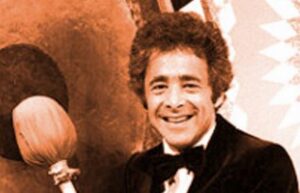
Houston Gamblers (H-town had a team in each league, so the Gamblers bit the dust)
New Jersey Generals
New Orleans Breakers
Pittsburgh Maulers
Philadelphia Stars
In addition, Canton, Ohio was expected to field a USFL team in 2024. They won’t now.
The XFL will lose three of its weakest teams from last season’s third incarnation of the spring football league (2001, 2020, and 2023). We will say “Adios” to the following franchises:

Orlando Guardians
Seattle Sea Dragons
Vegas Vipers
If at first you don’t succeed…
The December 31 announcement of the newly merged USFL and XFL into the combined UFL was not a surprise. The quality of play and television production of both leagues was surprisingly good.
However, the stadium optics on television made for a lousy product to watch at home.
An exciting football game in front of just a few thousand fans simply did not translate into a winner with home television viewers. The USFL and XFL did their best to hide the empty seats and even add some phony crowd noises to ramp-up the television product.
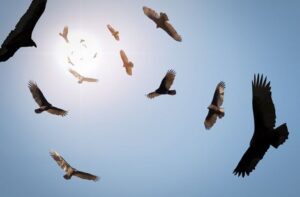
Neither league could attract more than about 500,000 television viewers to watch its top weekly game. The consensus has been that it will take at least one million viewers each week to generate enough advertising revenue to break even.
Both leagues have failed on the financial side.
It is safe to say that a merger would not have taken place if either the USFL or the XFL had been generating a profit for their owners.
The USFL lied to the fans of five of these recently-folded franchises
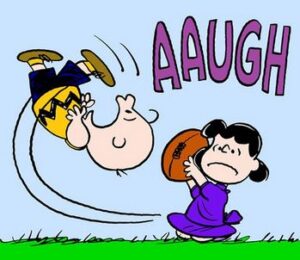
After two years of teasing fans in some of its markets that spring football was eventually on the way, the USFL just cancelled five franchises which never played a home game in their city.
The USFL’s Year #1 was, admittedly, a pricey gamble for a start-up league. To save money, Fox Sports (which owns 100% of the USFL) opted to play all of the league’s games in a brand new football stadium in Birmingham, Alabama. Though the hometown Stallions drew 20,000 fans to most of its games, the other three weekend games were sparsely attended by local fans.
Even with ticket prices less than $20 apiece in Birmingham, three out of the four USFL weekly televised games featured a mostly empty and very quiet stadium regardless of the excitement generated on the field.
In Year #2, the USFL took a tiny step toward more home games by having four “pods” to host games. Birmingham, Memphis, Detroit, and Canton, Ohio (which was promised a team in 2024) became the four host cities.
Just like in Year #1, the local market team saw a reasonable attendance (usually around 15,000). It was the other game in that market which struggled to attract more than a few hundred paying customers.

The USFL’s Pittsburgh Maulers were in existence for two years. They never played a single game in Pittsburgh. After Year #1 in Birmingham, Alabama, the Pittsburgh Maulers played Year #2 “home” games 100 miles away at a regional pod site in Canton, Ohio.
Ditto for the New Jersey Generals.
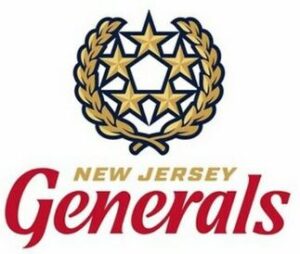
Canton, Ohio is 450 miles from Newark, New Jersey. As you might have expected, spring football fans of the New Jersey Generals stayed away in droves.
In Year #2, the Houston Gamblers played “home” games in Memphis (a 600 mile drive from Houston).
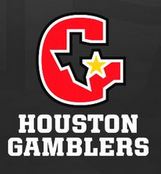
Houston fans apparently weren’t excited enough to trek to Elvis’ home town to watch their team play.
New Orleans’ Year #2 “home” games were played in Birmingham.
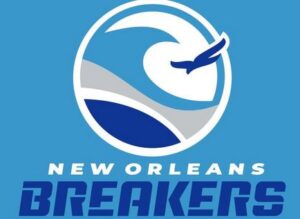
Breakers fans “only” had to travel 350 miles up I-59 to northern Alabama for their home games in Year #2. Though Crescent City football fans are quite devoted, they weren’t willing to travel to watch their team.
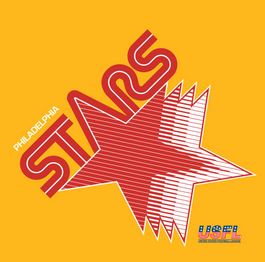
Philadelphia’s second year home games were played 600 miles to the west in Detroit. Ho hum.
Spring football fans in those five USFL cities were teased but never rewarded.
The XFL 3.0 treated its fans with more respect, but they lost a ton of money

The XFL’s third iteration was introduced and then heavily marketed by none other than WWE legend and movie star Dwayne “The Rock” Johnson. His ex-wife, Dani Garcia, was also featured in promotional work for the new league. The XFL (and new UFL) is also backed by hedge fund operator Redbird Capital (which just happens to oversee The Rock’s other business ventures in addition to several other sports enterprises).
Unlike the prudent and cost-conscious USFL, the XFL jumped right in and played football in all eight of its cities during 2023’s first season. Unfortunately, the XFL spent a lot more money on facilities and personnel required at these mostly empty football stadiums last year, too.
The brash XFL owners jumped into the pool head-first in 2023 and told the public that they were in this for the long haul.
Well, at least for Season #1.

“The Rock” didn’t earn hundreds of millions of dollars by throwing his money away. The XFL was hemorrhaging cash from Day 1 in 2023. It appears that they have smartly cut their losses for 2024 by agreeing to this merger with the USFL.
(Comment – A year ago, I provided some educated guesses as to how much money the XFL would probably lose in its inaugural season of 2023. Check out this link.)
The XFL played spring football in local stadiums in each of its eight markets in 2023. It probably didn’t take very long to identify which teams to keep and which to jettison in 2024.
St. Louis lost its NFL franchise (the Rams) to Los Angeles in 2016.
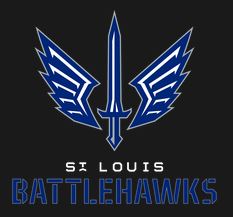
Local football fans quickly adopted the XFL’s Battlehawks with open arms in 2023. The team drew more than 30,000 fans on a few occasions last year.
On the other hand, the Vegas Vipers XFL franchise played in a rather embarrassing football stadium last year.

They struggled to draw more than a few thousand curious fans per home game in 2023.
With its five returning teams, the XFL should have a better handle on estimating its operating expenses. However, that still doesn’t mean that a single team will break even in 2024.
If both leagues were losing so much money, why bother with spring professional football again in 2024?
Here’s a possible reason.
There has been an explosion of online gambling sites in the past few years. The NFL and college football generate a lot of betting interest in the fall. So does the annual NCAA March Madness college basketball tournament coming out of winter.
Did you know that ESPN recently launched a deal with Penn Entertainment just two months ago (November, 2023) to create ESPN Bet?

Coincidentally, ESPN and ABC (both owned by Disney) will televise UFL games this season to support the newly formed league.
In terms of betting, football is akin to Godzilla.
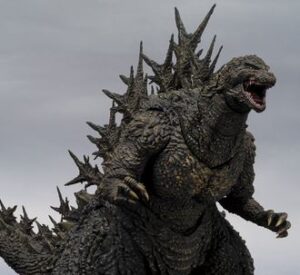
ESPN Bet will significantly benefit from an increase in its wagering activity originating from this newly-consolidated spring pro football league. Football games attract a lot of bettors.
The new UFL begins play with its first nationally televised game on March 30. The 2023 USFL champion Birmingham Stallions will meet the 2023 XFL champion Arlington Renegades in the debut game for the UFL.
Expect a significant advertising blitz by ESPN and ABC to generate buzz for television ratings and to boost betting action on the latest spring football league.
Fox Sports (former owner of the USFL with a 50% stake in the UFL) will be in charge of the operational aspects of the new spring league. Former Dallas Cowboys fullback Daryl “Moose” Johnston will continue in his role for the newly formed UFL.

Fox and FS1 will also provide television coverage of UFL games this spring to support their investment. Like the XFL’s ownership, Fox hopes that this year’s spring football league will finally break even.
What about the NFL? Will they eventually partner with this new spring league?
As we have discussed for the past two years, the NFL’s existing product has become a year-round newsmaker for fans.
After the Super Bowl is played in February, the talk immediately moves to new coaches being hired, trades and free agent signings, and the annual NFL draft in June. The NFL’s preseason games begin by late July.
So, the NFL preseason will start play just a few weeks after the UFL season will end? Hmm…

The NFL could possibly utilize the new UFL as a “feeder” league for its franchises at some point, but spring football has been a well-documented money loser.
The NFL doesn’t need spring pro football. It’s the other way around.
Like the rest of us, the NFL will watch television ratings to see if fan interest in the UFL’s version of spring football improves in 2024. For now, the NFL has no financial incentive to jump into this pool until it begins to show a profit and a lot more stability.

